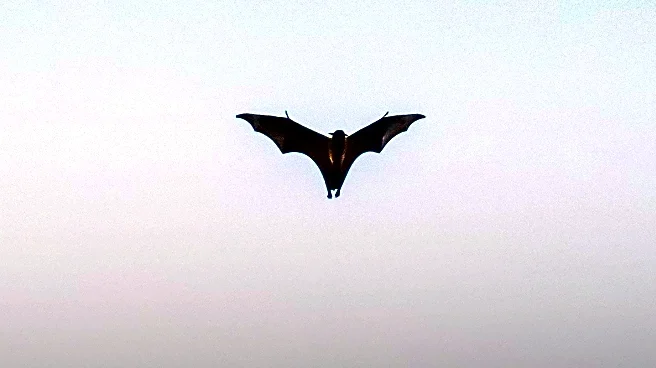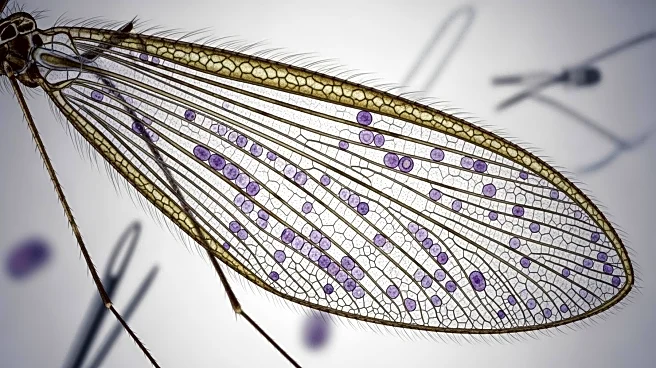What's Happening?
A recent study published in Communications Biology has revealed that only a few specific bat lineages are responsible for harboring viruses with high epidemic potential. This finding challenges the broad
perception that all bats are significant carriers of zoonotic diseases. The research utilized the Global Virome in One Network database to analyze 2,637 unique mammal-virus associations, focusing on the transmissibility and virulence of these viruses. The study found that viral epidemic potential is not uniformly distributed across the bat phylogeny, with certain clades showing higher risks. This research aims to refine disease monitoring efforts by targeting specific high-risk clades rather than generalizing all bats as potential threats.
Why It's Important?
The study's findings have significant implications for public health and conservation strategies. By identifying specific bat clades with higher viral epidemic potential, resources can be more effectively allocated to monitor and prevent zoonotic disease outbreaks. This targeted approach could lead to more efficient use of surveillance resources and reduce unnecessary culling of bats, which can disrupt ecosystems and potentially increase spillover risks. The research also highlights the importance of understanding the ecological roles of bats, such as pollination and pest control, and the need to balance these benefits with public health concerns.
What's Next?
The study suggests that future surveillance efforts should focus on the identified high-risk bat clades, particularly those within the Vespertilionoidea and Emballonuroidea superfamilies. Additionally, the research calls for a reevaluation of human-bat interactions, emphasizing that habitat destruction and other anthropogenic activities are primary drivers of zoonotic disease emergence. Policymakers and conservationists may need to collaborate on strategies that protect bat habitats while minimizing the risk of viral spillovers.
Beyond the Headlines
This research could shift the narrative around bats and zoonotic diseases, encouraging a more nuanced understanding of the factors contributing to viral spillovers. It underscores the need for a balanced approach that considers both the ecological importance of bats and the public health risks they pose. The study also highlights the potential for scientific bias in previous research, as some high-risk clades were identified despite being undersampled, suggesting that these findings reflect genuine biological patterns.











